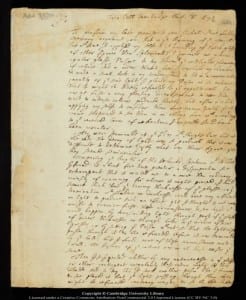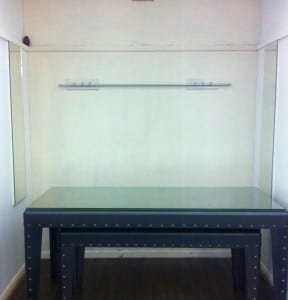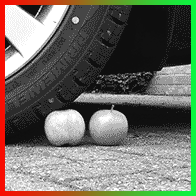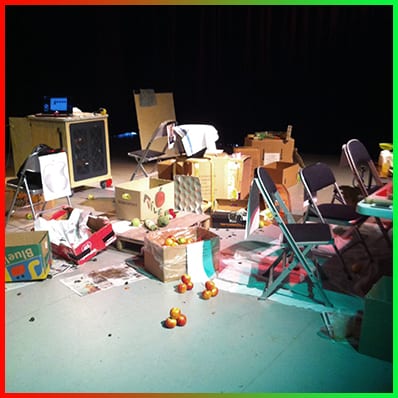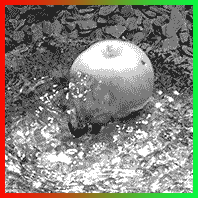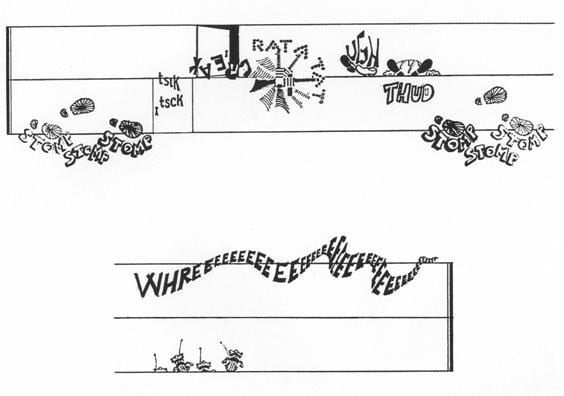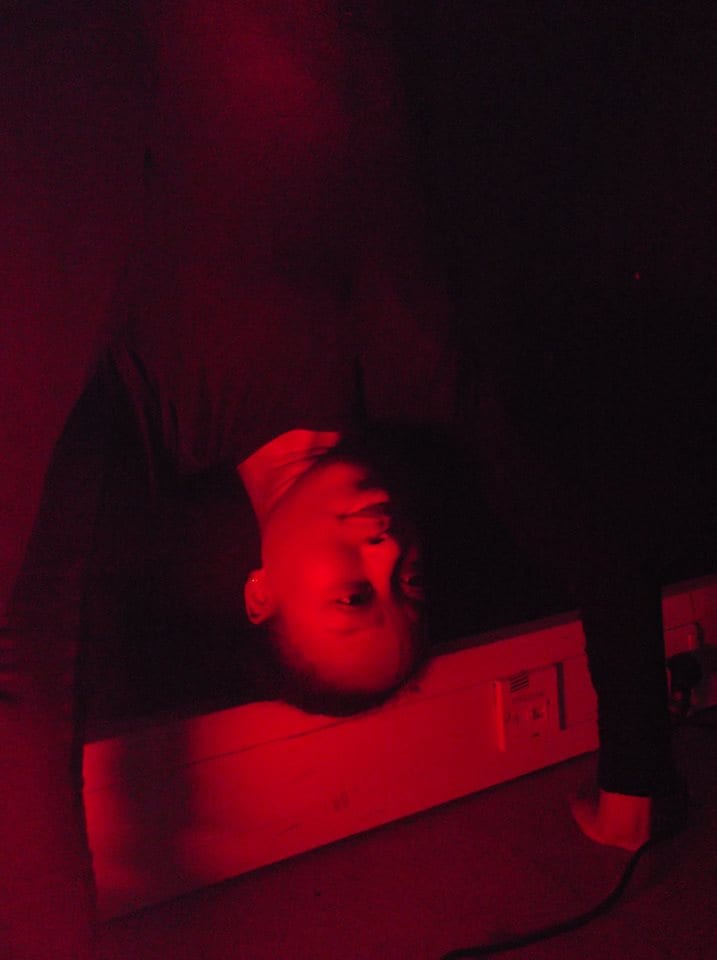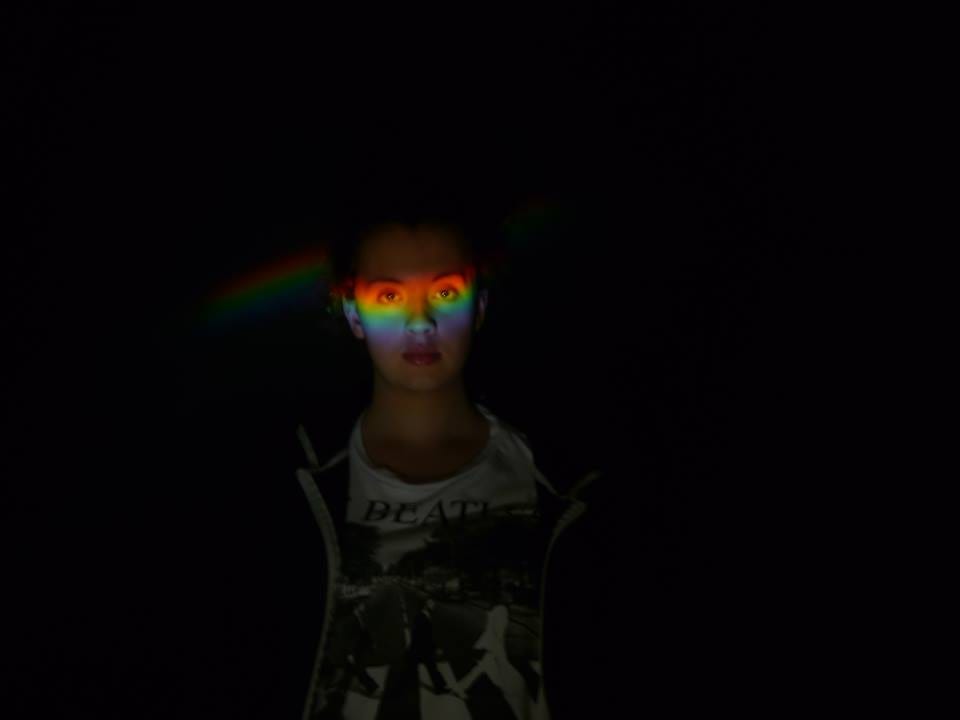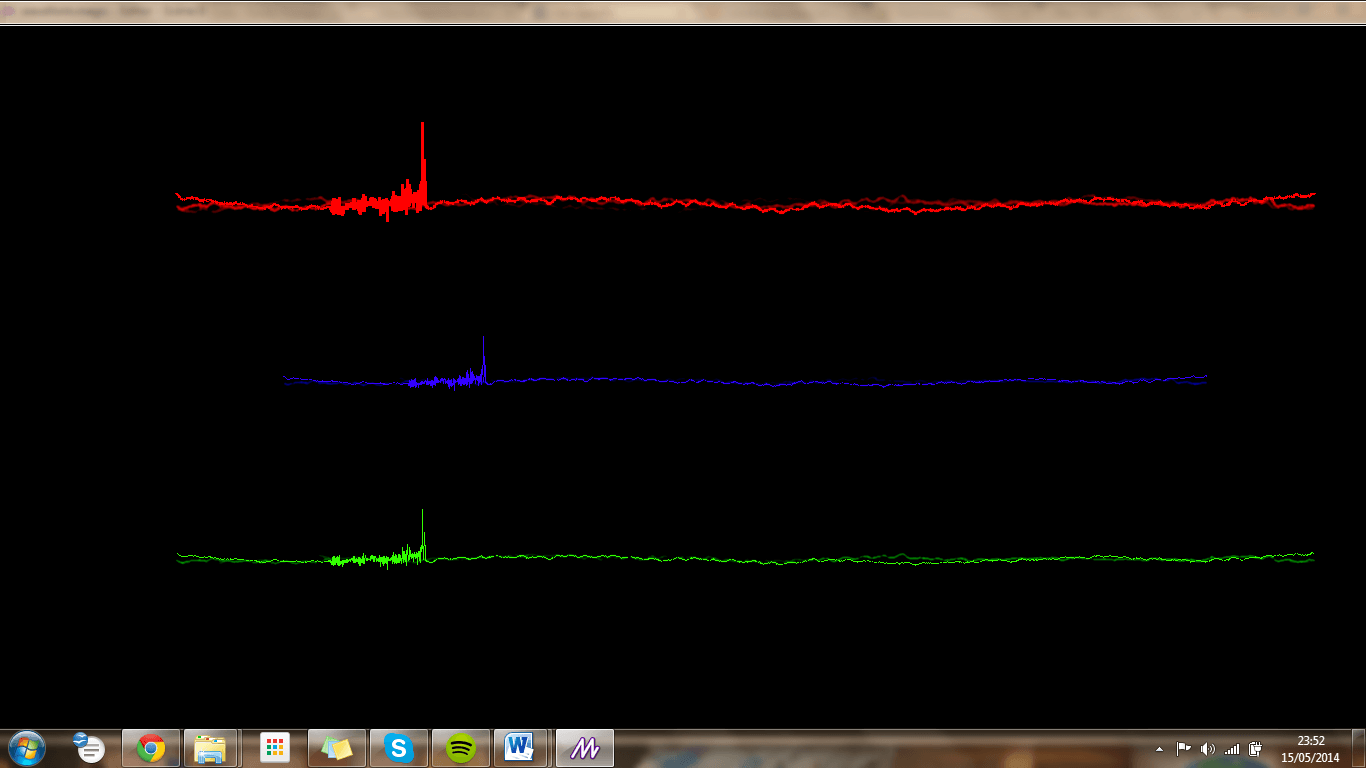Dispersion
Framing Statement
At the beginning of my group’s performance process, we were thinking about the ideas in which we were introduced to in our seminars, as we were to perform in a shop, based in The George Centre, Grantham. For instance, our initial idea was focused on the use of space and how you can make the most of it within the site. ‘If a place can be defined as relational, historical and concerned with identity, then a space which cannot be defined as relational, or historical, or concerned with identity will be a non-place’ (Auge, 1995, 78). The space of which the performance was to be presented in has a historical background based on the influence of the ‘father of modern scientific thought’ (Djerassi and Pinner, 2003, 1), Isaac Newton and his theories. Therefore the space of the shop can be seen to be a ‘place’ instead of a ‘non-place’. I was interested in the scientific ideas of light and sound, as were three other students in the class which led us to form a group. ‘I took so soon the colour’ (Djerassi and Pinner, 2003, 5), of light as did Newton, and how light travels in order for people to see objects. His ‘research starting around 1670 on light and color’ (Djerassi and Pinner, 2003, 1) influenced my group to practice what he had himself practiced, to discover the beautiful colours on earth. Isaac Newton was born in Woolsthorpe which is in Lincolnshire, near Grantham.
A few weeks before our final assessed performance we were informed that our performance ‘place’ had been relocated to the Lincoln Performing Arts Centre (LPAC) at the University of Lincoln, on Saturday 10th May. Therefore, this meant that the performance, Dispersion, lasted longer than it originally did. It went from being three hours to four hours, as a durational piece. As a group, we aimed our performance at individuals of any age, and decided that they were to visit and leave as they pleased. My idea of what we wanted the audience to gain from the performance was to develop a clearer understanding of what Newton’s theory of light was explaining ‘I procured me a triangular glasse Prisme to try therewith the celebrated phænomena of colours’ (Newton, 2003) was a sentence written by Isaac Newton himself describing how he used a glass prism to be able to visualise the colours of the spectrum.
Newton Papers from University of Cambridge (2011-2013)
With this, the audience would instantly know that it is a performance based on Newton’s theory. Bedwyr Lewis Jones suggests that ‘land and language are two strands that tie the…speaker to his cynefin or locale’ (Pearson, 2010, 19) and in this case Newton’s language of science linked in with the Grantham site as it is in an area of which Newton grew up. However the language could also tie in with the LPAC as we transformed the studio into a space of light relating to the text.
‘Site-specific performance involves an activity, an audience, and a place, then creative opportunities reside in the multiple creative articulations of us, them and there.’ (Pearson, 2010, 19)
Process
As our performance was based on light and sound we began to research the different activities concerning them and the different sources that make light. For instance, I experimented with a match to see what brought about the light of fire produced and ‘a mixture of potassium chlorate (oxidizer), sulfur (igniter) and phosphorus (fuel) designed to burn when ignited’ (Mohamed, Sivapirakasam and Surianaravanan, 2013, 343) were the materials that caused the fire. I made various notes on what I thought we could include in our performance ranging from indoor activities to interact with the audience, to having a silent disco, all to demonstrate the link between light and sound.
Notes from the notebook, Mainoo, S, (2014)
In the seminar on Monday 10th February, there were various site specific performances shown to the class in the format of pre performance, performance and post performance. In the section of ‘performance’ the Radio Ballet performance caught my attention as it linked in with my groups’ idea of how sound/directions from the headphones could be interpreted differently by the participants we engage with. My groups’ idea was to also use sound in this way to find out if the participants register the same kind of concept as each other with the use of their movement/body language just by hearing the instructions from the headphones. These ‘people with their radios suddenly stopped at the same time and then, after a moment’s hesitation, began performing certain movements… which each of the radio listeners followed individually in their respective places’ (Eikels, 2008, 85). Also, their performance is based in public places such as shopping centres, and this builds a correlation with the performance we initially wanted to achieve as it will also be in a shopping centre for the Gravity Fields Festival in September. The idea was for the public of Grantham to take part if they had wished to. Space was dealt with within the Radio Ballet performance as it ‘can be regarded as a site in which forms of identification and alienation are performed and where the production of social and power relations are revealed, reproduced and maintained’ (Rugg, 2010, 53). The dispersion of their participants and the fact that each participant had their own headphones allowed the public to be entertained as well as isolating the people involved; allowing them to identify themselves in their own space (i-space) and their movements being original. This is what my group aimed to do as it focused on sound, portraying that not everyone hears the same thing. The participants realise the ‘disjunction between the reading of space and the experience of space’ (Kaye, 2000, 41) in this context, as they read the history of the space and are also performing in the space.
My group then began to stray away from the idea of the headphones as we soon realised it may not be possible to progress with this as there would be various technical difficulties. We focused precisely on the science behind light and reflection through mirrors. We started by rehearsing different, subtle movements with the use of our bodies, facing a mirror as we were thinking to perform this in Grantham.
Mirrors in the Grantham shop, Mainoo, S. (2014)
As soon as my group entered this shop we knew it was perfect in relation to our subject area. There were plenty of mirrors positioned in various areas of the room, and this was the idea we had portrayed in our minds. This space in particular allows our idea of self reflection come into play as we liked the idea of our participants, with the use of lighting, to explore the different ways in which lighting creates a mood. This space was ideal as it is its own space which can be closed off from the rest of the room, allowing the participant to focus on what they are doing, away from the rest of the activities happening in the shop.
I was influenced by Michel de Certeau in his chapter ‘Walking in the City’. ‘The spectator can read in it a universe that is constantly exploding’ (de Certeau, 1984), as the spectator is on the 110th floor of the building looking down on the world as a God like figure. Imagination and technical semiotics are presented to the spectator when they view the patterns of everyday life within a ‘larger power-structure’ (de Certeau, 1984). Therefore the spectator who is above those below could be seen to have more power and dominance over the people who are not on the ‘110th floor’ (de Certeau, 1984).
As my groups’ performance was partially based around the theme of light, the ‘Walking in the City’ text relates to our performance as light can be seen to be a powerful aspect in the world. Light is essential to humans and animals in the world to live their life, as it is used in order for people to see. When light hits and then reflects of an object, for instance a mirror, the light rays travel in a linear line into our eyes in order for us to see the object. Therefore, light can be seen to be on the ‘110th floor’ (de Certeau, 1984), just like the spectator, as light is above us all and surrounding us proving its power.
Some may say that Scientists view situations in the world completely different to how others view the world, and in this case they would have the power. This may be because they have been educated with the ideal perspective of the world in which others have not, and knowledge therefore gives them the power. We as a group were the scientists in this case as we have power over the audience. We have learnt the facts about light and sound (we have the knowledge), and then will hopefully present what we know to the audience and then they will hopefully learn something new.
Individuals walking past each other in the city are like a piece of ‘text’ in which we can ‘read’ their movements. As they walk around the city it is as if they are weaving places/buildings together with their footsteps, and therefore creating a unique pattern of their own. This relates to my groups original idea of the chain reaction line in which we were weaving in and out of the space we were in, fast paced and slow paced to signify light rays, in order to create a pattern. This pattern was created with our footsteps and our physical movement with the body. We also had created a musical pattern with wooden spoons in order to listen to the sound of the beat being performed, and for the audience to eventually see a pattern forming.
Our influence was also based on the work of the company TEDx who presented science topics with the use of movement and speech. ‘The idea of space as defining the limits in which performances of the everyday are inscribed and contained…expressions of community are articulated, are investigated through consideration of a range of artworks’ (Rugg, 2010, 53). Science was produced in our movement with fast paced running to present the light rays being turned on and a chain reaction presenting the sound waves and the frequencies of both light and sound.
(TEDx, 2011)
George Seurat’s ‘A Sunday Afternoon on the Island of La Grande Jatte’ image influenced my group as the use of colours he uses in his painting presents a different colour that we see from a distance. Cathy Berberian’s Stripsody Score influenced my groups idea of using our voices to pronounce words in various ways to present how our vocals can make high and low pitch sounds. My group made a performance based on movement representing light and sound for the audience to visualise, however we progressed into making a ‘simple’ performance.
We went for a more minimalistic performance as we wanted our audience to focus on specific actions taking place in the room and for them to think about what we were presenting. We researched minimalistic music which we thought could be incorporated into our performance seeing as we wanted our staging to be minimalistic also. We ‘utilized the anti-spectacle to propose an alternative perception of space’ (Rugg, 2010, 64) in this sense we used a non striking performance to let the audience focus on the striking space.
Our performance included ‘manipulation of the material landscape in its own right, the artist adding, removing or displacing materials…to create sculpture, drawing out the relationships between existing characteristics of site and evidence of human intervention’(Pearson, 2010, 33). We used materials in the landscape such as lighting on the ceiling which reacts to the sound of our voices as we read the Newton, ‘Theory of Light’ text. This light changed colour to the sound of our voices. The use of a prism was presented to the audience, showing the colours of the spectrum on our bodies. As a group we decided to experiment, combining light and the body to see how different colours of light can affect the way the bodily features are presented. We shined light from different angles and directions and used body parts from head to feet to explore this idea. We also experimented with different colours of light shining through the prism to see if that would make any difference to just white lighting going through it to make various colours. ‘Prism separates the sunbeam’s rays into a myriad of colours and each colour is the property of a specific ray that has a specific velocity’ (Djerassi and Pinner, 2003, 23) like a rainbow. A member of the group would be sitting in front of the television watching a video my group produced for a period of thirty minutes, as we rotated in activity after this duration of time. The audience ‘may leave with different versions of the event, having chosen what is significant and why, from a field of activity and information’ (Pearson, 2010, 37). They may not be interested in everything we had presented, however they will take at least one thing from it that they didn’t know, for example the ideas Newton had in order to gain the colours of the spectrum.‘Local speech is a treasury of sensitive response to a total environment of land…and human behaviour’ (Pearson, 2010, 102). This is what Newton’s text gave to the performance and it influenced our behaviour when performing, as we were so engaged in the lighting, that when the audience came in we did not react to them and kept our focus. We sectioned the studio into two sections, one of which had the television and prism activity in and the other the newton text being read. When speaking into the microphone, we presented sound waves on a projector at the back of the stage to give the audience a sense of how high and low our voices were going. ‘The public is an active agent and theatre doesn’t exist until it/they is/are engaged’ (Pearson, 2010, 37).
(Dispersion, 2014)
Our space was blacked out as there has to be darkness to therefore present light. The only light produced was the light above us which would change colour, the over head projector light used with the prisms to produce colour and the television.
Performance Evaluation
Overall we had about twenty-five people who visited our performance. The lighting that changed to the sound of our voices worked well in our performance as it showed the link we wanted between light and sound. Our dispersion video also worked well as it presented some of the work we did in rehearsal and the beautiful colours produced from the prism and the light that changes colour. However, to improve the performance the video could have lasted longer as there was so much more striking video’s and pictures we had produced. The text being read also worked well as the audience would listen to the theory of light and at the same time see the theory of light. If I was to read the text again I would analyse the text more closely, knowing the definition to every word I had originally not know. I would also read at a slower pace for the audience to be able to precisely understand what I was reading. The sound waves were powerful as they were projected high up where people would be able to view as soon as they went into the second room.
The final performance made me think about using various televisions in a room with our Dispersion video playing over and over again, with the inspiration of Kutlug Ataman’s ‘Kuba’ performance (Rugg, 2010, 61). In the LPAC I thought about the idea of having various colours of light spinning around the room as a light show as this would be extremely striking for the audience. If we could afford it, next time I would get a strong laser and see how defined the colours of the spectrum are presented.
I would also contain the audience within the room for a certain amount of time as I felt that some people came in and then left without taking much thought to what was happening and therefore missing ideal bits in the performance. Also instead of having the performer siting watching the television for thirty minutes, we could try them reacting to what is happening on the screen or even mimic what is happening with a member of the audience (including a prism) for audience interaction.
Site specific performance has helped me have a more advanced understanding of how anything can be a performance as long as it is justified. As we performed in LPAC, it was a venue that is well known to us; however it is a site that is specific to our performance in the way that it was a blacked out space of which we needed.
The final performance of ‘Dispersion’ went well. The staging was of a simple layout and my group did not want to complicate the performance as there was beauty in the simplicity.
Dispersion spoke to the audience in our performance as there was Dispersion of images on the video, Dispersion of voice through the microphone, Dispersion of sound waves on the projector, which eventually all linked to the dispersion of light and colours being provided in the performance room itself.
Site can be conceived in a number of different ways. This performance can be placed in any space, because ‘space is a practised place’ (Govan et al, 2007, 104).
Works Cited
Pearson, M. (2010) Site-Specific Performance. Basingstoke: Palgrave Macmillan.
Govan, E., Nicholson, H. and Normington, K. (2007) Making a Performance Devising Histories and Contemporary Practices. New York: Routledge.
Rugg, J. (2010) Exploring Site-Specific Art Issues of Space and Internationalism. New York: I.B.Tauris & Co Ltd.
Djerassi, C. and Pinner, D. (2003) Newton’s Darkness Two Dramatic Views. London: Imperial College Press.
Kaye, R. (2000) site-specific art performance, place and documentation. New York: Routledge.
Auge, M. (1995) non-places introduction to an anthropology of super modernity. London: Verso.
Newton, I. (2003) Draft of ‘A Theory Concerning Light and Colors’. Cambridge: Cambridge University Library. Available from: http://www.newtonproject.sussex.ac.uk/view/texts/normalized/NATP00003 [Accessed 5 May 2014].
Nalla Mohamed, M. Sivapirakasam, S.P. and Surianaravanan, M. (2013) Experimental investigation on the impact sensitivity of a match head composition influenced by the surface roughness of in-process contact materials. Process Safety and Environmental Protection, 91(5) 343-350.
Van Eikels, Kai. (2008) This Side of the Gathering: The Movement of Acting Collectively: Ligna’s Radioballett. International Bibliography of Theatre & Dance with Full Text, 13 (1) 85-98.
de Certeau, Michel. (1984) The Practice of Everyday Life, trans. Steven Rendall. University of California Press: Berkeley.
TEDx (2011) Dance your PhD: John Bohannon & Black Label Movement at TEDxBrussels [online video] Available from https://www.youtube.com/watch?feature=player_embedded&v=UlDWRZ7IYqw [Accessed 6 March 2014]
Mainoo, S (2014) Dispersion [online video] Available from https://www.youtube.com/watch?v=6ptHrQfdaR4 [Accessed 7 May 2014]
